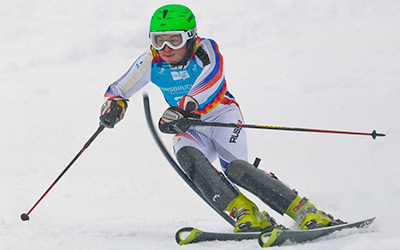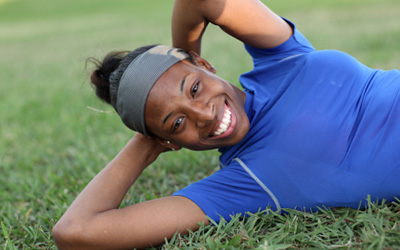



This year, top athletes will gather together in Sochi, Russia to compete in the 22nd Winter Olympic Games, and almost half of the respondents to a recent Student Health 101 survey said they’ll watch. No matter where you live, the Olympics can inspire you to try some sports-training themed exercise.
While the array of Winter Olympic events is diverse, there are four tenets of fitness common to the athletes’ workout regimens:
These can also support your personal fitness, whether you’re a seasoned athlete or backyard ball player.
“[The Olympics] inspire me to be active because watching people succeed makes me want to strive,” says Tessa P., a junior at the University of Montana in Missoula. “I look up to them. They see fitness the way I do.”
The American Council on Exercise recommends incorporating sport-specific exercises into regular workouts, and there are many simple ways to use Olympic events as inspiration for your own activities.

In 2010, The Nielsen Company, which keeps track of consumer information for companies all over the world, reported that skiing was the most popular sport among viewers during that year’s Winter Olympics-especially freestyle and downhill.
Balance is essential in this sport, and you don’t need a snow-covered mountain to train like a skier. A Bosu® ball can help you improve your ability, and your agility will be strengthened by working out your core with crunches and other exercises that isolate your abdominal and back muscles. For five Bosu® exercises for increasing balancewatch the video below.
Lower-body strength is needed for the tucked position in skiing and when navigating difficult terrain. This can be developed with exercises like wall sits and lunges. For wall-sit instruction watch the video below.
Wall-sit instruction. (MP4)
A trainer or athletic coach can help you set up a lower-body circuit for moving quickly from one exercise to the next. For more about circuit training watch the video below.
Circuit training. (MP4)
Many people like to watch speed- and figure skating, very graceful and aesthetically pleasing events. “I always get pumped up during the Olympics, especially when I see my favorite athletes competing,” says Lisa M., a freshman at the University of California, Los Angeles.
Figure skating requires strong, quick bursts of power for those impressive jumps and turns. Even if you’ve never set foot inside a rink, you can use plyometric exercises, which involve exerting as much force as possible in a short amount of time, to build up that kind of strength.
For example, practice jumping onto elevated surfaces, such as a sturdy box. (Your school’s gym probably has a prop designed for this.) Start from a squatting position. Pay attention to how your body moves when you jump and repeat those same motions (in reverse) as you land. This is important for decelerating your body, protecting your knees, and maintaining balance.
For more about plyometrics watch the video below.
More about plyometrics. (MP4)
In luge, the competitor lies down on a small sled, on his or her back, and races down a tight ice track. It’s a bit nerve-wracking to watch!
Like in many sports, core strength is critical for luge, particularly for balance. Strengthening the abdominal muscles, back, glutes, arms, and neck are all necessary.
For abdominal strength-training ideas watch the video below.
According to The Nielsen Company, hockey was the most talked-about sport online during the 2010 Olympics. It requires a lot of side-to-side motion with the legs and feet.
You can imitate the motions of hockey on a smooth surface, like a wooden floor. Exercises like front, back, and side lunges-and jumping jacks-will work your lower body for the endurance necessary.
“The sport itself is a blend between high- and low-intensity components,” says Landon Evans, assistant strength and conditioning coach at The University of Iowa, in Iowa City. Cal Dietz, head Olympic strength and conditioning coach at the University of Minnesota in Minneapolis, explains that repeated sprint ability is also important. “[This is] your ability to recover quickly from a sprint and go out and repeat the effort again,” he says.
Alisha P., a first-year graduate student at Bethel University in St. Paul, Minnesota, suggests playing broomball, which is similar to hockey. “It’s great fun and very good for your thighs and hips, too,” she says. Learn more about broomball.
While cheering for your favorite athletes and teams, you and your friends can create your own Olympics.
Sara is a senior at Brandeis University, where she is the editor of Justice, the independent student newspaper.
Gather some friends and create your own Olympic games! Friendly competition can be a motivator and also makes watching sports an active endeavor.
The “events” don’t need to use a lot of space, and you can come up with your own rules. For example:
Music is a great motivator, too. You can put together an Olympic playlist and share it with your “teammates!”




